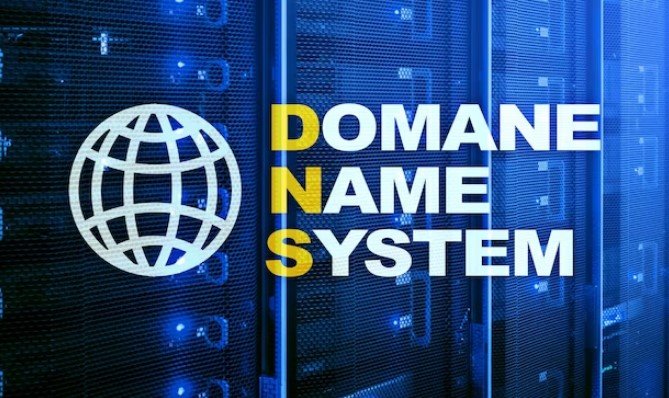
The Real Timeline: How Long Does a Domain Transfer Actually Take?
Introduction to Domain Transfers
Think of domain transfers as moving your digital address from one service provider to another. It’s a process where the administrative control of a domain name is shifted from one registrar (the company where you bought your domain) to another. This is akin to moving your cell phone service from one carrier to another while keeping the same phone number.
The Significance of Transfer Timelines
Understanding the timeline of a domain transfer is critical. Why? Because it affects your website’s uptime, email functionality, and overall online presence. The duration of the transfer process can vary, and being in the dark about how long it takes can lead to unnecessary stress and potential website downtime.
The Basics of Domain Transfers
A domain transfer is essential for website management. It involves not just a change in service provider but also ensures that your domain name continues to reflect your brand or personal identity on the internet.
The Key Players
There are three main parties in the transfer process: the domain owner (that’s you), the current registrar (where the domain is currently held), and the new registrar (where you’re transferring the domain to). The registry, a central database for all domain names, also plays a critical role in this process.

Pre-Transfer Checklist: Ensuring Eligibility
Are You Eligible to Transfer?
Not all domains can be transferred at any time. There are specific criteria that need to be met. For instance, most domains cannot be transferred within 60 days of registration or previous transfer. Also, the domain must be unlocked at the current registrar, and privacy settings may need to be adjusted for the transfer process.
Preparing for Transfer
Once eligibility is confirmed, the next step is preparation. This includes ensuring the domain is unlocked and obtaining an authorization code (also known as an EPP code) from your current registrar. This code is like a password, confirming your intent to transfer the domain.
Initiating the Domain Transfer Process
To kickstart the transfer, you’ll need to provide the new registrar with your domain name and the EPP code. This is usually done through the new registrar’s website, where you’ll find options to initiate the transfer.
Documentation Requirements
Accurate and up-to-date contact information is essential. The new registrar will use this info to verify ownership and to contact you during the transfer process. Any discrepancies in the information can lead to delays.
Understanding the Transfer Timeline
The duration of a domain transfer can vary, but typically, it can take anywhere from five to seven days. This time frame can be influenced by factors like the responsiveness of the current registrar and the specific top-level domain (TLD).
The Process Breakdown
The transfer process involves several stages: initiation (where you request the transfer), verification (where both registrars confirm the details), and the actual transfer. Each stage requires a certain amount of time, which contributes to the overall duration of the process.
Factors Influencing Transfer Duration
Transferring a domain from one registrar to another can be a nuanced process, influenced by a variety of factors. Understanding these elements is crucial for anticipating the time required and for addressing any potential delays.
Registrar Policies and Their Impact on Timing
Each domain registrar operates under its own set of policies, which can significantly influence the duration of a domain transfer. These policies may encompass specific verification processes, transfer lock periods, and unique administrative protocols. For instance, some registrars require additional security checks, which can add time to the transfer process. In contrast, others might have streamlined procedures that expedite the transfer.
Technical and Administrative Factors That Can Cause Delays
Delays in domain transfers can often be attributed to a range of technical and administrative factors. Key among these are inaccuracies in the domain’s contact information, issues with unlocking the domain, and discrepancies in the authorization codes (also known as EPP codes). Furthermore, ongoing updates to the domain or unresolved disputes can put a temporary hold on the transfer process, prolonging the timeframe.
Overcoming Common Transfer Delays
Encountering delays during a domain transfer is not uncommon, but identifying and addressing common issues can streamline the process.
Identifying and Addressing Common Issues
Issues like incorrect registrant contact details, domain locks, and invalid EPP codes are common culprits behind transfer delays. Timely identification and resolution of these issues are essential. Ensuring that the domain’s contact information is up to date and that the domain is unlocked are preliminary steps. Acquiring the correct EPP code from the current registrar is also vital.
Tips for a Smoother Transfer Process
To facilitate a smoother transfer process, it’s advisable to confirm all domain details with the current registrar before initiating the transfer. Ensuring that the domain is unlocked and obtaining the EPP code in advance can prevent delays. Additionally, prompt responses to any verification emails or requests from either registrar can expedite the process.

Special Cases: Newly Registered and Expired Domains
Transferring newly registered or expired domains involves additional considerations and adhering to specific rules.
Transfer Rules for Newly Registered Domains
Domains that have been newly registered typically come with a mandatory 60-day lock period during which transfers are not permitted. This regulation, set by the Internet Corporation for Assigned Names and Numbers (ICANN), is designed to prevent fraudulent activities and unauthorized transfers.
Considerations for Expired or About-to-Expire Domains
For domains that are either expired or close to expiration, understanding the policies of the involved registrars is critical. Transferring an expired domain can be complex, and it is often recommended to renew the domain with the current registrar before initiating the transfer, to avoid complications.
Advanced Tips: Accelerating the Transfer
Certain strategies can be employed to potentially hasten the domain transfer process.
Strategies for Speeding Up the Process
Effective communication with both the current and receiving registrars can be instrumental in accelerating the transfer. Ensuring that all prerequisites for the transfer are met beforehand can also streamline the process.
How Proactive Communication Can Help
Proactive and clear communication with the registrars can help quickly resolve any arising issues, thereby speeding up the transfer. Keeping all parties informed and actively involved can lead to more efficient processing.
What to Expect After Transfer Completion
Post-transfer, there are immediate changes that occur, and certain actions may be necessary to ensure continued functionality.
Immediate Changes and Access Post-Transfer
Once the transfer is completed, the domain will be under the management of the new registrar. This changeover includes the management of domain renewals, DNS settings, and associated services such as email hosting.
Ensuring Seamless Website and Email Functionality
After the transfer, it’s important to check that website and email services are functioning correctly. This often involves updating DNS records and ensuring email settings are correctly configured with the new registrar to avoid service disruptions.

Conclusion: Managing Expectations and Planning Ahead
A successful domain transfer requires a clear understanding of the process and strategic planning.
Recap of Key Points
The article covered the varying factors that can affect the duration of a domain transfer, strategies to overcome common delays, special considerations for new and expired domains, and tips for expediting the transfer process.
The Importance of Planning and Understanding Timelines in Domain Transfers
Effective planning and a comprehensive understanding of the timelines involved are crucial in managing expectations and ensuring a smooth domain transfer. Being proactive, prepared, and well-informed can significantly ease the transition from one registrar to another.

As a seasoned professional with a unique blend of skills in Computer Design and Digital Marketing, I bring a comprehensive perspective to the digital landscape. Holding degrees in both Computer Science and Marketing, I excel in creating visually appealing and user-friendly designs while strategically promoting them in the digital world.

